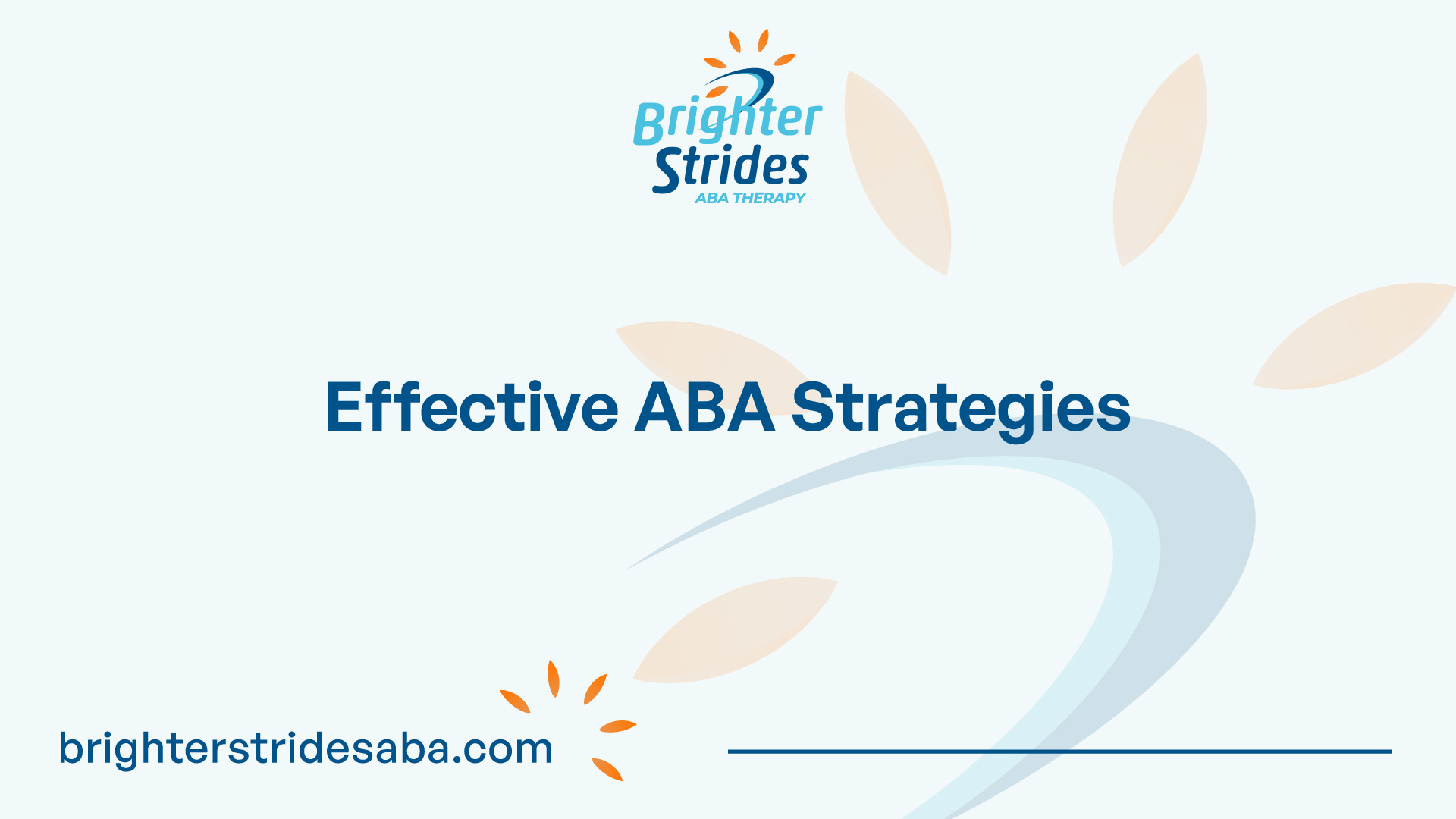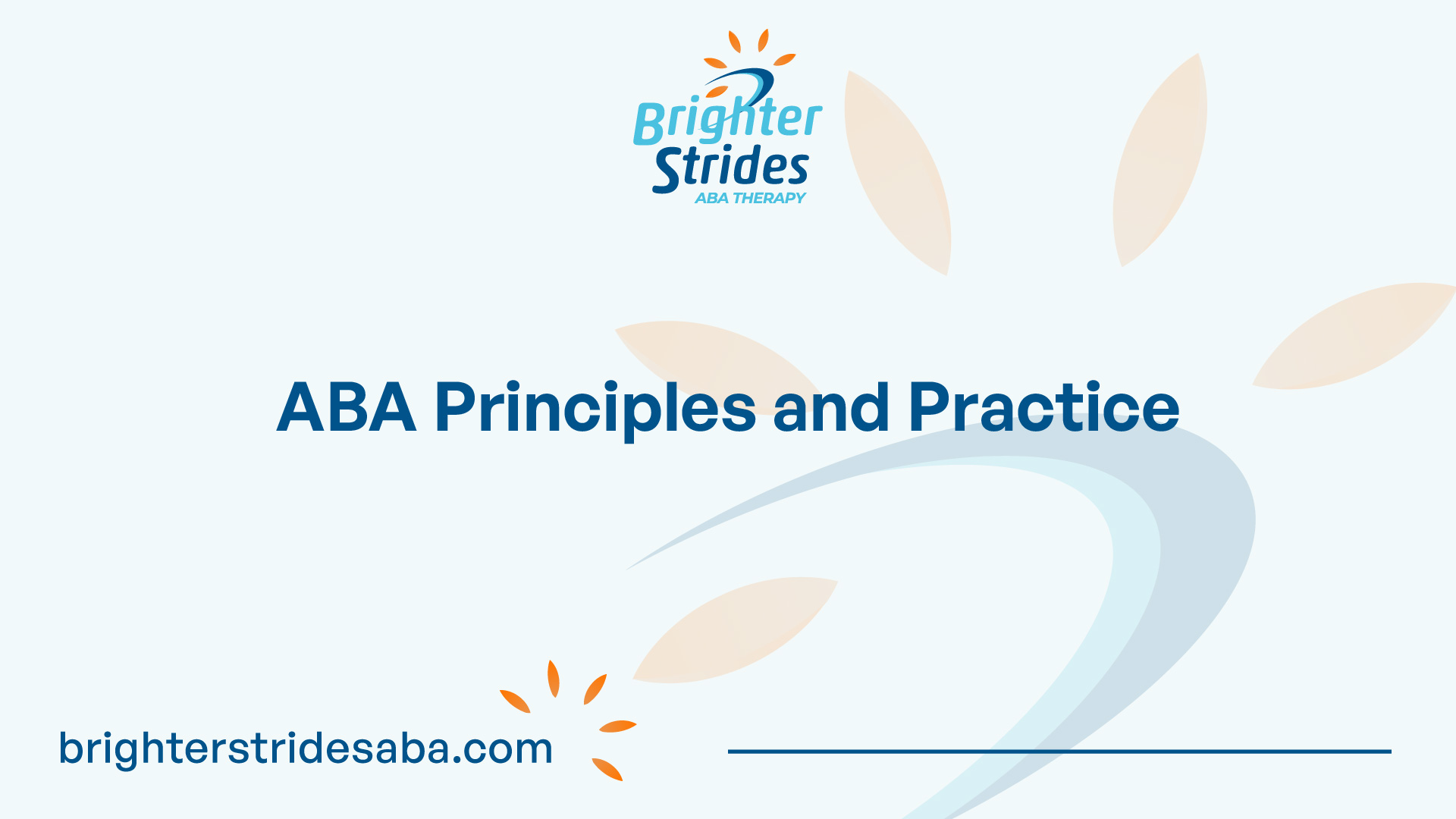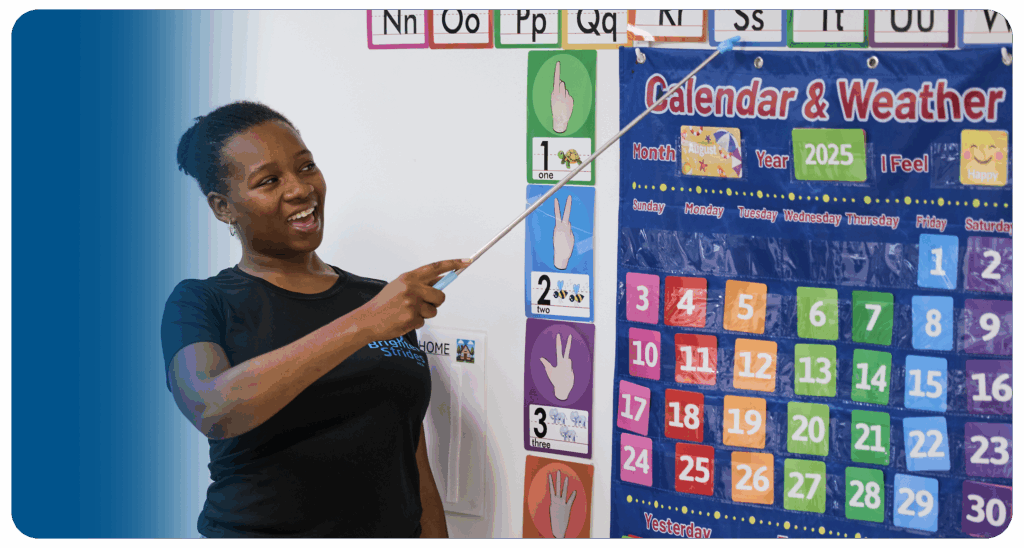
Understanding ABA Techniques
When it comes to Applied Behavior Analysis (ABA), there are various techniques that are employed to help individuals with autism spectrum disorder (ASD) develop new skills and behaviors. In this section, we will explore three key techniques: positive and negative reinforcement, video modeling, and prompting and fading.
Positive and Negative Reinforcement
Positive and negative reinforcement are foundational ABA techniques that focus on shaping and reinforcing desired behaviors. Positive reinforcement involves providing a reward or preferred item immediately following a desired behavior, increasing the likelihood of that behavior being repeated. This could be something as simple as praise, a sticker, or a small treat. The reward serves as motivation for the individual to engage in the desired behavior again in the future [1].
On the other hand, negative reinforcement involves removing an aversive stimulus when a desired behavior occurs. For example, if a child is engaging in a challenging behavior, such as hitting, and they stop when asked, the aversive stimulus of a loud noise or bright light may be removed. This removal of the aversive stimulus reinforces the desired behavior of stopping the hitting. It’s important to note that negative reinforcement is not the same as punishment, as it focuses on removing an aversive stimulus rather than applying a punishment.
Both positive and negative reinforcement are used in ABA therapy to increase appropriate behaviors and teach individuals with ASD new skills. By consistently reinforcing desired behaviors, individuals are more likely to engage in those behaviors in the future, leading to positive behavior change.
Video Modeling
Video modeling is an effective ABA technique that utilizes visual learning to teach individuals with ASD new skills and behaviors. With video modeling, individuals watch videos that demonstrate the desired behavior, allowing them to observe and imitate social interactions, emotional expressions, or specific actions. By repeatedly watching the videos, individuals can learn and acquire the targeted skills.
Video modeling offers several advantages. It provides a visual representation of the desired behavior, which can be particularly helpful for individuals with autism who often excel in visual learning. It also allows for repeated viewing, enabling individuals to practice the behavior in a controlled and structured manner. Video modeling can be especially beneficial for teaching complex social skills, such as making eye contact, initiating conversations, or engaging in play activities.
Prompting and Fading
Prompting and fading is a technique commonly used in ABA therapy to help individuals with ASD acquire new skills and behaviors. It involves providing prompts or cues to assist the individual in performing the desired behavior, gradually reducing the prompts over time to promote independence.
Prompts can take various forms, including physical guidance, verbal cues, visual cues, or gestural cues. The level of prompting provided depends on the individual’s current skill level and their ability to perform the behavior independently. As the individual becomes more proficient, the prompts are gradually faded, allowing them to perform the behavior with minimal or no assistance.
The goal of prompting and fading is to help individuals learn and generalize new skills, gradually reducing the need for prompts and promoting independent functioning. By systematically fading prompts, individuals can develop the ability to perform the desired behavior without external assistance, leading to increased independence and skill acquisition [1].
Understanding these ABA techniques – positive and negative reinforcement, video modeling, and prompting and fading – is essential for implementing effective therapy strategies. By utilizing these techniques, ABA professionals and caregivers can help individuals with autism develop new skills, improve behavior, and achieve a brighter future.

Effective ABA Strategies
When it comes to implementing ABA strategies, it’s important to consider techniques that are effective in promoting positive behavior change and skill development. Two such strategies widely used in ABA therapy are Natural Environment Teaching (NET) and Behavior Contracts.
Natural Environment Teaching
Natural Environment Teaching (NET) is a technique that encourages learning in real-life settings, such as teaching behavior in a grocery store rather than at home. This approach, as highlighted by Dream Big Children, has proven to be highly effective for children with autism. By incorporating learning opportunities into the natural environment, NET promotes generalization and social interaction skills in ABA therapy.
NET allows children to practice newly acquired skills in the context in which they will be used, enhancing their ability to transfer those skills to real-life situations. This strategy helps individuals with autism generalize skills across different settings, people, and materials. By providing learning opportunities in natural environments, NET promotes a more comprehensive and meaningful learning experience.
Behavior Contracts
Behavior contracts are an effective strategy commonly used in ABA therapy, particularly for slightly older children with autism. As described by Dream Big Children, behavior contracts utilize positive and negative reinforcement through rewards like gold tokens for desired behaviors. This technique fosters accountability and consistency in behavior management.
Behavior contracts outline specific target behaviors, the consequences for engaging in those behaviors, and the rewards for meeting behavioral expectations. By clearly defining expectations and reinforcing positive behaviors, behavior contracts provide a structure that helps children understand and work towards desired outcomes. This strategy promotes self-monitoring and self-regulation, empowering children to take an active role in their behavior modification process.
When implementing these strategies, it is essential to tailor them to the individual needs of each child. Customizing ABA programs (aba program evaluation) ensures that the strategies used are aligned with the specific goals and challenges of the child. By incorporating a combination of effective techniques like NET and behavior contracts, ABA therapists can create a comprehensive and individualized treatment plan (aba treatment plans) that maximizes the potential for positive behavior change and skill development.
Using evidence-based best practices and individualized treatment plans, ABA therapy has shown significant benefits in improving the lives of individuals with autism. By applying effective strategies such as NET and behavior contracts, ABA therapists can help individuals with autism reach their full potential and lead more fulfilling lives.
ABA Therapy Evolution
The evolution of ABA therapy, or Applied Behavior Analysis, has been instrumental in providing effective interventions for individuals with autism and other behavioral challenges. Two significant developments in the field of ABA are the Lovaas Method and Early Intensive Behavioral Interventions (EIBI), as well as the introduction of Functional Behavior Assessment (FBA).
Lovaas Method and EIBI
In the 1960s, Ole Ivar Løvaas introduced the Lovaas Method, which is now widely recognized as Applied Behavior Analysis (ABA) therapy. Løvaas’s research, published in 1987, involved a study with 40 children who received ABA therapy for two to six years. The results showed significant improvements in social skills and cognition for 90% of the children compared to a control group. Follow-up studies in 1993 demonstrated that these skills were retained into adolescence [3].
Building on the foundation laid by the Lovaas Method, Early Intensive Behavioral Interventions (EIBI) have become a gold standard for early intervention in autistic children. EIBI emphasizes intensive one-on-one therapy and systematic teaching methods to maximize outcomes. The goal is to provide early intervention when the brain is most receptive to learning, leading to significant improvements in communication, social interaction, and adaptive skills [3].
Functional Behavior Assessment
Functional Behavior Assessment (FBA) has become a vital component of ABA therapy. This assessment allows behavior analysts to identify the function of challenging behaviors by analyzing the antecedents and consequences. By understanding the underlying reasons for these behaviors, behavior analysts can develop targeted interventions to address them effectively. FBA helps identify the environmental factors that trigger and maintain challenging behaviors, enabling the development of individualized behavior plans that focus on teaching alternative, more appropriate behaviors.
ABA therapy has evolved beyond its initial applications for autism to address a wide range of behavioral challenges in individuals with intellectual disabilities, developmental disorders, substance abuse, and mental health conditions. ABA therapy’s evidence-based strategies and techniques have proven effective in promoting behavior changes and improving daily living across various populations [3]. By continuously incorporating research and advancements, ABA therapy continues to evolve and adapt to meet the needs of individuals seeking behavior modification and support.

ABA Principles and Practice
In the field of Applied Behavior Analysis (ABA), principles and practices are essential for designing effective interventions and promoting positive behavior changes. Two important components of ABA principles and practice include BCBA therapists and customized ABA programs.
BCBA Therapists
A BCBA therapist, or Board Certified Behavior Analyst, plays a crucial role in the implementation of ABA techniques and strategies. These trained professionals specialize in behavior analysis, assessing, analyzing, and providing interventions to address behavioral issues and promote positive behavior changes. BCBA therapists are equipped with the knowledge and skills to conduct functional behavior assessments, develop behavior intervention plans, and oversee the implementation of interventions.
BCBA therapists work closely with individuals with autism and their families to understand their unique needs, interests, and preferences. They collaborate with families to design and oversee ABA programs, customizing them to each learner’s skills, needs, and family situation [2]. The expertise of BCBA therapists ensures that ABA interventions are evidence-based, tailored to the individual’s specific goals, and continuously evaluated for effectiveness.
Customized ABA Programs
Today’s ABA programs are expected to be tailored and customized to the needs, values, and culture of each child and family. ABA services should involve choice-making and person-centered planning, allowing clients and families to have a say in their target goals and treatment, aligning with their family’s culture [5]. Customization involves taking into account the unique characteristics, preferences, and cultural background of the individual receiving ABA therapy.
Customized ABA programs are designed to address specific behavioral issues and promote positive behavior changes. These programs are created by BCBA therapists in collaboration with families, ensuring that the interventions align with the family’s values and goals. By tailoring the program to the individual’s needs, interests, and family situation, ABA therapy becomes more effective and meaningful.
Through the expertise of BCBA therapists and the customization of ABA programs, individuals with autism can receive the most appropriate and effective interventions. The goal is to promote positive behavior changes, enhance daily functioning, and improve overall quality of life. By combining professional expertise with family input, ABA programs can be customized to maximize outcomes and provide the best support for individuals with autism and their families.
Impact of ABA Interventions
When it comes to treating individuals with autism, ABA (Applied Behavior Analysis) interventions have shown significant impact and effectiveness. ABA is recognized as an evidence-based best practice treatment by the US Surgeon General and the American Psychological Association, with numerous studies supporting its positive outcomes for children with autism. Let’s explore two key aspects that contribute to the impact of ABA interventions: evidence-based best practices and individualized treatment plans.
Evidence-Based Best Practices
The effectiveness of ABA interventions in improving outcomes for individuals with autism has been well-documented. According to a meta-analysis conducted by Virués-Ortega (2010), ABA interventions implemented in early childhood, with long-term and comprehensive designs, resulted in positive medium to large effects in areas such as language development, social functioning, intellectual functioning, and acquisition of daily living skills for those diagnosed with autism [6]. Furthermore, long-term, comprehensive ABA-based interventions have shown positive medium to large effects in intellectual functioning, language development, acquisition of daily living skills, and social functioning.
These findings highlight the significance of evidence-based best practices when implementing ABA interventions. By utilizing techniques and strategies grounded in scientific research, therapists can tailor interventions to address the specific needs of individuals with autism. This evidence-based approach ensures that interventions are effective, promoting positive outcomes and enhancing the quality of life for individuals with autism.
Individualized Treatment Plans
One of the key strengths of ABA interventions is the emphasis on individualized treatment plans. Each individual with autism has unique strengths, challenges, and learning styles. ABA recognizes these differences and tailors treatment plans accordingly. ABA therapists, often Board Certified Behavior Analysts (BCBAs), conduct thorough assessments, including functional behavior assessments, to identify specific areas of focus and develop personalized intervention strategies [2].
Individualized treatment plans in ABA take into account the specific goals and needs of the individual, addressing areas such as communication, social skills, behavior management, and daily living skills. These plans are flexible and evolve over time as progress is made and new goals are set. The customization of treatment plans ensures that interventions are targeted and effective, maximizing the potential for positive outcomes.
By combining evidence-based best practices with individualized treatment plans, ABA interventions have a profound impact on individuals with autism. These interventions are designed to promote skill development, independence, and meaningful improvements in various areas of functioning. Through the use of ABA principles and techniques, individuals with autism can unlock their potential and work towards a brighter future.
For more information on ABA strategies and techniques, refer to our sections on ABA Techniques and Effective ABA Strategies.




